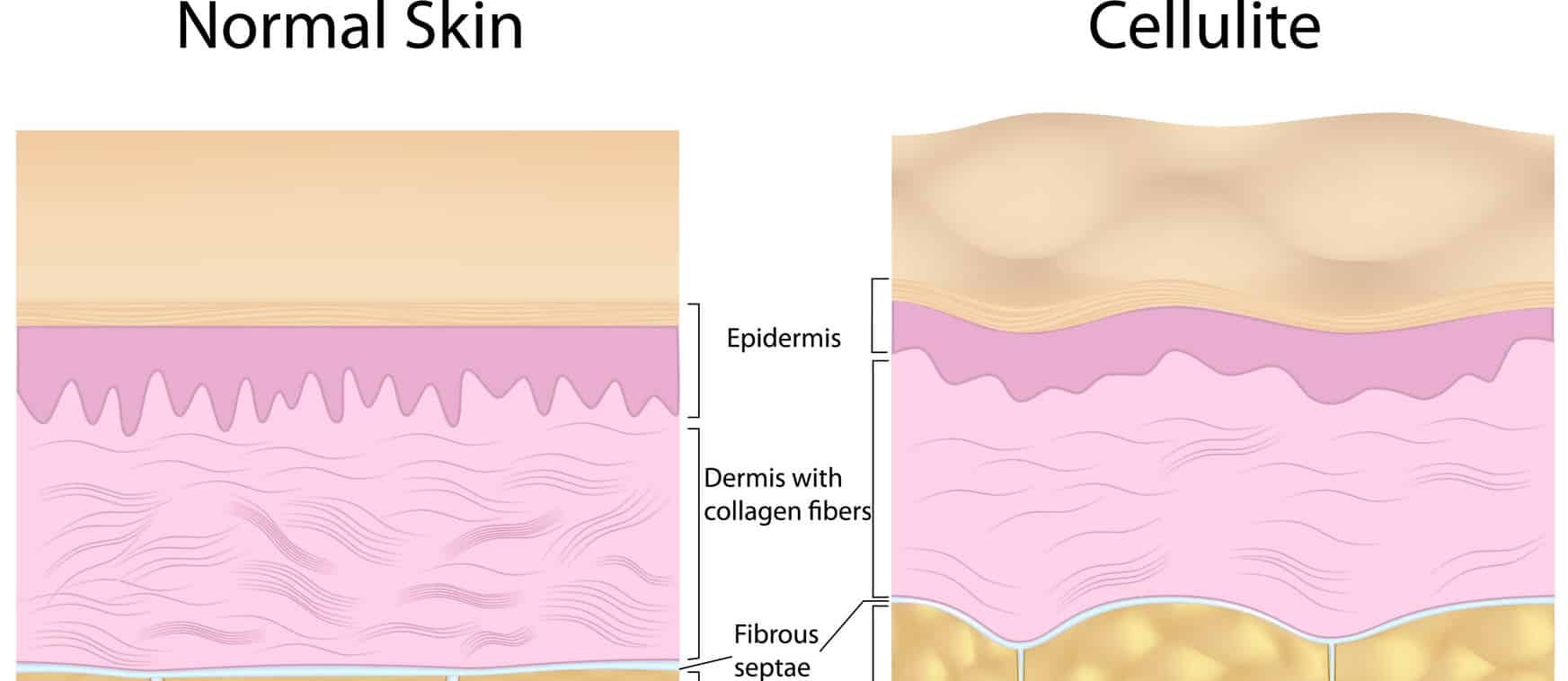Two theories about the build-up of subcutaneous fat, involving the chemical spermine and the hormone adiponectin, suggest a plant-based diet may help with cellulite.
Gynoid lipodystrophy, known colloquially as cellulite, is the orange peel-type or cottage cheese-like dimpling of the skin on the thighs and tushes of the majority of women. Since it basically results from excess fat storage, attention has turned to spermine and spermidine as potential culprits, since a study found that rubbing a spermine-trapping molecule on one’s thighs apparently results in a significant drop in thigh volume, circumference, and cellulite scores.
Spermine was first discovered in human semen back in the 1600s, but only recently quantified in food. The top sources in the American diet were found to be ground meat and lunch meat such as ham, turkey, bologna and salami; green peas, which are also the primary source of spermidine; and cheese such as American and cheddar. So would eating some cheesey peesey meat casserole make cellulite worse? It’s never been tested, but if it did, that could be one of the mechanisms. The reason the food study was funded by the National Cancer Institute is because of a concern that this whole class of compounds may increase cancer risk. For example, polyamine intake was recently associated with increased risk of colorectal polyps.
For more on the adverse health effects associated with the intake of “biogenic amines” (chemical compounds of decay such as spermine and cadaverine) see my video Carcinogenic Putrescine.
The other cellulite theory has to do with the hormone adiponectin. If you biopsy the fat in the gluteal region of women with and without cellulite, there seems to be less adiponectin expression in the cellulitic butt fat, so maybe adiponectin is protective. How do you keep adiponectin levels from dropping? Don’t eat a sausage and egg breakfast, which a study showed can lead to a drop in levels within hours (compared to a vegetarian meal). Additionally, switching to a vegetarian diet appears to increase adiponectin levels 19 percent.
A meat-free, egg-free diet of vegetables, grains, beans, fruits, and nuts with animal products limited to a maximum of one portion of low fat yogurt a day was compared to the conventional diabetic diet. Though all study participants in both groups were made to eat the same number of calories, the vegetable-heavy group lost more weight, lost more waist, lost more cholesterol, more subQ fat, and more belly fat. The subcutaneous fat is what makes up cellulite, so a plant-based diet could potentially decrease cellulite, but we won’t know for sure until it’s experimentally tested directly. Watch my 3-min video Can Cellulite Be Treated With Diet? to see the graphs.
Ideally, you want to keep your Waist Circumference Less Than Half Your Height. If you’re having trouble with abdominal fat, check out my videos:
- Slimming the Gecko
- Meat and Weight Gain in the PANACEA Study
- Cattlemen’s Association Has Beef With Study
More on diet and physical appearance can be found at:
- Preventing Wrinkles with Diet
- Beauty Is More Than Skin Deep
- Golden Glow
- Produce, Not Pills to Increase Physical Attractiveness
- Rosy Glow
- The Acne-Promoting Effects of Milk
-Michael Greger, M.D.
PS: If you haven’t yet, you can subscribe to my videos for free by clicking here and watch my full 2012 – 2015 presentations Uprooting the Leading Causes of Death, More than an Apple a Day, From Table to Able, and Food as Medicine.
